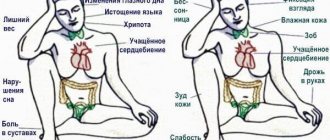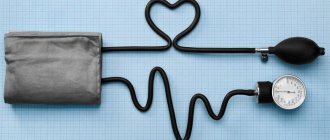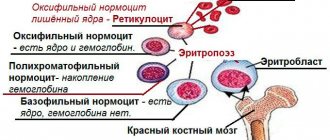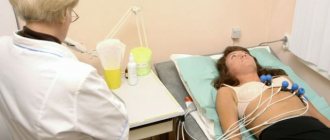Nosebleeds (scientific name: epistaxis) is the abnormal flow of blood from the nasal vessels through the nostrils or down the pharynx. Usually this condition does not pose a serious threat. But if it happens often, it requires medical consultation, since it can be a symptom of serious illnesses.
In case of frequent problems with nosebleeds, do not delay treatment - call +7 (499) 653-58-25 or make an appointment on our website online. We have experienced doctors who will definitely help you!
Causes
Possible causes of bleeding:
- mechanical trauma to the nasal mucosa;
- deviation of the nasal septum to one or both sides from the midline;
- thinning of the nasal mucosa;
- inflammatory processes of various origins;
- benign or malignant formations inside the nasopharynx;
- hyperthermia during an infectious process or after overheating in the sun;
- exacerbation of hypertension;
- hormonal disorders;
- abuse of vasoconstrictor drops;
- long-term use of NSAIDs;
- overdose of anticoagulants, leading to problems with blood clotting;
- dilation of blood vessels when drinking alcohol;
- diseases of the circulatory system, heart or blood vessels;
- changes in barometric pressure (divers, climbers, during air travel).
Expectant mothers, more often in the third trimester, experience mild nasal bleeding due to the growth of the capillary network in the nasal cavity due to increased production of estrogen.
Types of nosebleeds
There are 2 types of nosebleeds and are classified by location:
- Anterior - blood flows from one or both nostrils in the form of drops or streams. Most often, this deviation from the norm affects the capillaries. This epistaxis is not dangerous and usually stops without outside help.
- Posterior section - blood does not appear from the nasal canals, but flows into the pharynx and enters the digestive tract. It is provoked by damage to large blood vessels localized in the lower parts of the nose. They usually require medical attention to resolve.
Posterior bleeding is a rarer occurrence than anterior bleeding, but is more life-threatening. Bleeding from the nasal cavity is also divided according to frequency into: one-time, recurrent or habitual.
Symptoms
The main symptom of epistaxis is blood coming out of the nostrils or entering the oral cavity from the upper part of the pharynx. In more severe cases, accompanying symptoms are revealed:
- weakness, nausea, disturbance of spatial orientation;
- feeling of fullness in the ears;
- headache;
- tachycardia;
- hypotension;
- pallor of the skin.
If blood ends up in the stomach, vomiting with blood clots occurs, and the stool becomes dark in color.
Treatment of increased intracranial pressure at ON CLINIC Ryazan
If ICP is a secondary disorder and represents one of the complications of any disease, it is necessary first of all to treat the primary pathology. In other cases, symptomatic treatment of ICP is performed.
There are conservative and surgical treatments for this pathology. Conservative - taking medications prescribed by the attending physician that enhance the outflow of fluid according to the regimen prescribed by the attending physician. These can be either regular diuretics or anti-inflammatory steroids. Physiotherapy and massage have also been proven to treat increased intracranial pressure.
Surgical intervention is performed in the most severe cases of ICP. Usually this is bypass surgery - the installation of a special shunt through which excess fluid moves away from the brain, rushing into the abdominal cavity.
Untreated ICP in a timely manner can lead to such serious complications as stroke, partial and complete paralysis, impaired coordination, reflexes, speech, as well as loss of vision and mental problems. If you experience symptoms that may be signs of a deterioration in the flow of cerebrospinal fluid from the brain, consult a doctor as soon as possible! “ON CLINIC Ryazan” - Your health is our concern!
First aid for nosebleeds
To stop bleeding, first aid includes the following:
- The victim is seated on a chair or armchair so that his body leans slightly forward.
- A cotton wool or gauze swab is generously moistened with water or 3% peroxide and placed in the nostril from which blood is flowing.
- Before removing the tampon, it is re-moistened by applying liquid through a pipette, and then carefully removed.
If there is no injury to the nasal septum or a fracture of the facial bones, and there is nothing at hand to make a tampon, then simply press the wings of the nose against the septum with the thumb and forefinger. The time of such fixation is 3-5 minutes. The victim should breathe through his mouth with his head slightly tilted forward.
It is also advisable to apply something cold to the bridge of the nose or the back of the head for a quarter of an hour. To make sure that blood does not flow into the throat, simply spit and evaluate the condition of the saliva. If there are no streaks of blood in it, then there is no reason to worry.
When to see a doctor
An emergency medical team must be called in the following cases:
- the bleeding is massive and continues for too long;
- there is a suspicion of traumatic injury or entry of a foreign body;
- any diseases associated with impaired hemostasis have been diagnosed.
Age may also influence the difficulty of treatment. The older the patient, the more difficult it is to stop the bleeding and the more severe the consequences of blood loss.
Those who constantly have nosebleeds, when blood pressure rises or against the background of exacerbation of other systemic diseases also need medical advice. First of all, nasal bleeding is the profile of an otolaryngologist (ENT), but endocrinologists, hematologists and other specialists may also be interested in such a patient.
Diagnosis and treatment
The evaluation of epistaxis begins with a history and general physical examination using a nasal dilator and nasopharyngeal speculum.
To accurately identify the cause of the pathology, additional diagnostic methods are used:
- general clinical analysis of blood and urine;
- coagulogram;
- Ultrasound;
- ECG;
- X-ray, CT, MRI.
When bleeding from the nose, treatment begins with rapid relief of the pathological condition in order to prevent large blood loss. Then the cause that caused the epistaxis is eliminated and the possible consequences of acute blood loss are prevented.
If the bleeding cannot be stopped through the use of anterior or posterior tamponade and the use of hemostatic drugs, then resort to the following manipulations:
- radio wave method - the vessels are cauterized using the Surgitron apparatus, which emits high-frequency radio waves through electrodes, instantly evaporating moisture in the cells and promoting coagulation.
- electrocoagulation - vessels are cauterized under the influence of electric current;
- cryocoagulation - cauterization of the mucous membrane using liquid nitrogen;
- laser coagulation - the vessel is evaporated under the influence of high temperature of a narrowly directed laser beam;
If epistaxis is associated with a blood clotting disorder, the patient is prescribed hemostatic agents. If the reason lies in hypovitaminosis, then the patient is given a multivitamin complex.
Causes of headaches and nosebleeds
A headache and bloody nose are a sign of various disorders in the body or its reaction to external stimuli. This symptom can occur even in a healthy person, but in the form of an isolated case. The condition is considered serious if nosebleeds occur frequently, are difficult to stop, and the patient suffers from constant headaches. There are several conditions in which similar symptoms may appear:
- inflammatory diseases that affect various structures of the nose;
- vascular diseases, which reduce their strength and elasticity;
- exposure to environmental factors;
- systemic diseases of the hematopoietic organs, neoplasms and other serious pathologies;
- injuries and their consequences.
Bleeding can be stopped regardless of its origin. However, it is important to understand why this symptom occurs, especially if it occurs frequently and is accompanied by a headache. To do this, it is worth undergoing a comprehensive examination of blood vessels and other systems. Treatment will be aimed at eliminating the underlying cause that is causing the nosebleeds and headache symptoms.
Action of external factors
The body of both a child and an adult reacts to environmental conditions and climate. These factors do not affect general well-being, but can also cause headaches and dizziness, and damage to the vascular walls. The most common conditions that cause headaches and nosebleeds are:
- too dry and hot air outdoors or indoors - it causes the mucous membrane of the nose and nasal passages to dry out, the vessels become weak and brittle;
- increased atmospheric pressure or its sharp increase also has a detrimental effect on the condition of small capillaries;
- frequent use of nasal drops or spray;
- mechanical damage to the nasal mucosa, including inhalation of small particles of sand and dust;
- ingestion of chemicals with inhaled air, often ammonia.
If in an adult, nosebleeds appear more often in response to external irritants, changes in weather conditions and stress factors, then a child’s nasal passages should definitely be examined. They may contain small foreign objects that injure the mucous membrane and cause pain in the head. First aid cannot always be provided at home. If it is difficult to remove the object, it is better to immediately go to the doctor - he has special tools with which you can carry out the procedure with minimal damage.
High blood pressure
Nosebleeds combined with severe headaches are the first sign of a hypertensive crisis. This condition is manifested by a sharp increase in blood pressure to 180/120 mm. rt. Art. and more. The vascular walls cannot withstand blood pressure and are damaged. First of all, small capillaries rupture, which are located in the nose, on visible mucous membranes and under the skin.
The most informative way to determine a hypertensive crisis is to measure blood pressure, including at home. This condition can be suspected if the following symptoms occur:
- severe, pressing headache - can be concentrated in the temples or spread to the entire surface of the head;
- nausea, dizziness, general weakness;
- redness of the skin and mucous membranes;
- arrhythmia, rapid pulse;
- the appearance of bruises under the skin and on the mucous membranes, nosebleeds.
Hypertension is a chronic condition in which the patient needs to constantly monitor blood pressure. Doctors recommend avoiding stress, intense physical activity, and sudden changes in weather conditions. Drug treatment is prescribed to reduce blood pressure.
Injuries
One of the common causes of headaches and nosebleeds is mechanical damage to the mucous membrane and structures of the nose. This can occur due to a blow or fall, or foreign objects entering the nasal passages. The severity of the injury determines how easy it is to stop the bleeding. If the nasal septum, cartilage and other structures remain intact, the damage is not dangerous and heals within a few days.
Similar symptoms can develop with closed head injuries. Bruise and concussion are the mildest stages, but require medical attention. You should consult a doctor if the following symptoms appear after a blow to the head:
- acute headache, dizziness;
- nosebleeds;
- nausea, vomiting;
- blurred vision, dark circles or spots;
- fainting, including short-term ones.
After a traumatic brain injury, it is necessary to remain in bed and completely avoid any type of physical activity. If the injury is mild, you can gradually return to your normal lifestyle after a week. If symptoms persist or worsen, it is important to undergo an examination, assess the degree of injury to brain structures, and determine the presence of hematomas. The doctor may prescribe medications to improve cerebral circulation, painkillers and anti-inflammatory drugs, and medications to relieve swelling.
Inflammatory processes
One of the reasons why headaches and nosebleeds occur is inflammation of the mucous membrane. Often the process is associated with a viral infection that affects the respiratory tract. Flu, colds, and seasonal infectious diseases are accompanied by a runny nose, swelling of the mucous membranes, headache and difficulty breathing. This leads to weakness of the capillaries and damage to their walls. The duration of the disease is on average 3–15 days, after which all symptoms disappear.
Nosebleeds can occur with prolonged colds. Their cause is the frequent use of vasoconstrictor nasal drops or sprays, which also cause dryness of the nasal mucosa. During the course of treatment, you should read the instructions and avoid overdose of medications.
Diseases of the cardiovascular system
Doctors recommend getting tested if headaches and nosebleeds occur frequently. These symptoms may indicate chronic diseases of the blood vessels, heart and hematopoietic organs. They lead to weakness of the vascular walls, their damage when blood pressure rises, as well as a deterioration in the blood supply to certain areas.
A full examination may reveal serious violations:
- diseases of the blood system, including leukemia, hemophilia, decreased platelet levels;
- congenital or acquired heart defects;
- lack of certain vitamins that are involved in hematopoiesis (vitamins K, B12);
- concomitant pathologies of internal organs, including the liver;
- systemic infectious diseases that affect the condition of blood vessels (measles, rubella, lupus erythematosus).
If left untreated, the symptoms of the disease become pronounced. Headaches are accompanied by frequent fainting, changes in blood pressure, and a general deterioration in well-being. Stressful situations, overwork or physical exertion can lead to exacerbation. The patient is also advised to monitor his diet and take prescribed medications.
Allergy
Allergic reactions are the response of the immune system if it perceives normal substances as foreign. It triggers complex biochemical reactions, as when a viral or bacterial infection occurs. However, such processes cause harm to the body, as they are accompanied by inflammation, swelling of the mucous membranes, headache and other typical symptoms.
Many allergens enter the body through inhaled air. The most common ones include dust and pollen, household chemicals and dyes. They are located on the nasal mucosa, so inflammatory reactions develop in this area. A person develops a runny nose and headache, and their sense of smell worsens. Dryness of the mucous membrane and its swelling lead to vascular weakness and nosebleeds. To get rid of allergy symptoms, you should avoid contact with irritants and take antihistamines as needed.
Other reasons
Headache accompanied by nosebleeds is a typical symptom for many conditions. It is important to pay attention to additional complaints. These include difficulty breathing, shortness of breath, frequent pain in a certain area of the head, blurred vision and others. As a result of the examination, the following violations may be detected:
- polyps that are located in the nasal passages - neoplasms not only interfere with normal breathing, but also injure small blood vessels;
- migraine is a headache that occurs without a specific cause and may be accompanied by nosebleeds;
- adverse reactions during the use of certain medications;
- diseases of the endocrine system, as well as hormonal changes during pregnancy.
At home, it is not always possible to determine what caused nosebleeds and headaches. If this symptom occurs regularly, this is a reason to consult a specialist and undergo treatment. In the early stages, even serious diseases are easier to treat, so doctors do not recommend self-medicating at home.
Prevention
To avoid bleeding in adults or children, it is useful to adhere to the following rules:
- get rid of the habit of picking your nose;
- against the background of allergic or cold nasal congestion, do not blow your nose too often;
- when practicing dangerous sports (boxing, rugby), wear a protective helmet;
- use vasoconstrictors strictly according to instructions (no longer than 7 days);
- to reduce pressure in the nasal cavity, you should sneeze with your mouth open;
- If coagulants previously caused nasal bleeding, then the next time they are prescribed, be sure to inform your doctor about this.
It is also important not to rip off the crusts in the nose formed after bleeding until the mucous membrane recovers on its own. Otherwise, bleeding in this case may recur every day.
When working in production with polluted air, it is necessary to use personal protective equipment. To prevent bleeding, it is useful to undergo regular preventive examinations. With the next episode of epistaxis, it is important to see an otolaryngologist to find out the cause of the bleeding and receive recommendations for the future.
Rehabilitation period after surgery
Stopping nosebleeds is a kind of surgical intervention, which requires daily observation by an ENT doctor and postoperative rehabilitation. Patients who have had nasal tampons or hemostatic sponges installed receive hemostatic therapy after stopping the bleeding. If necessary, they are transfused with components of lost blood and undergo therapy aimed at lowering blood pressure. On average, a patient stays with a tampon in his nose for 3-7 days. After which the tampons are carefully removed, and the patient is under daily medical supervision for several days. During the rehabilitation period, it is important to continue taking medications that strengthen blood vessels, accelerate healing and moisturize the nasal mucosa.









